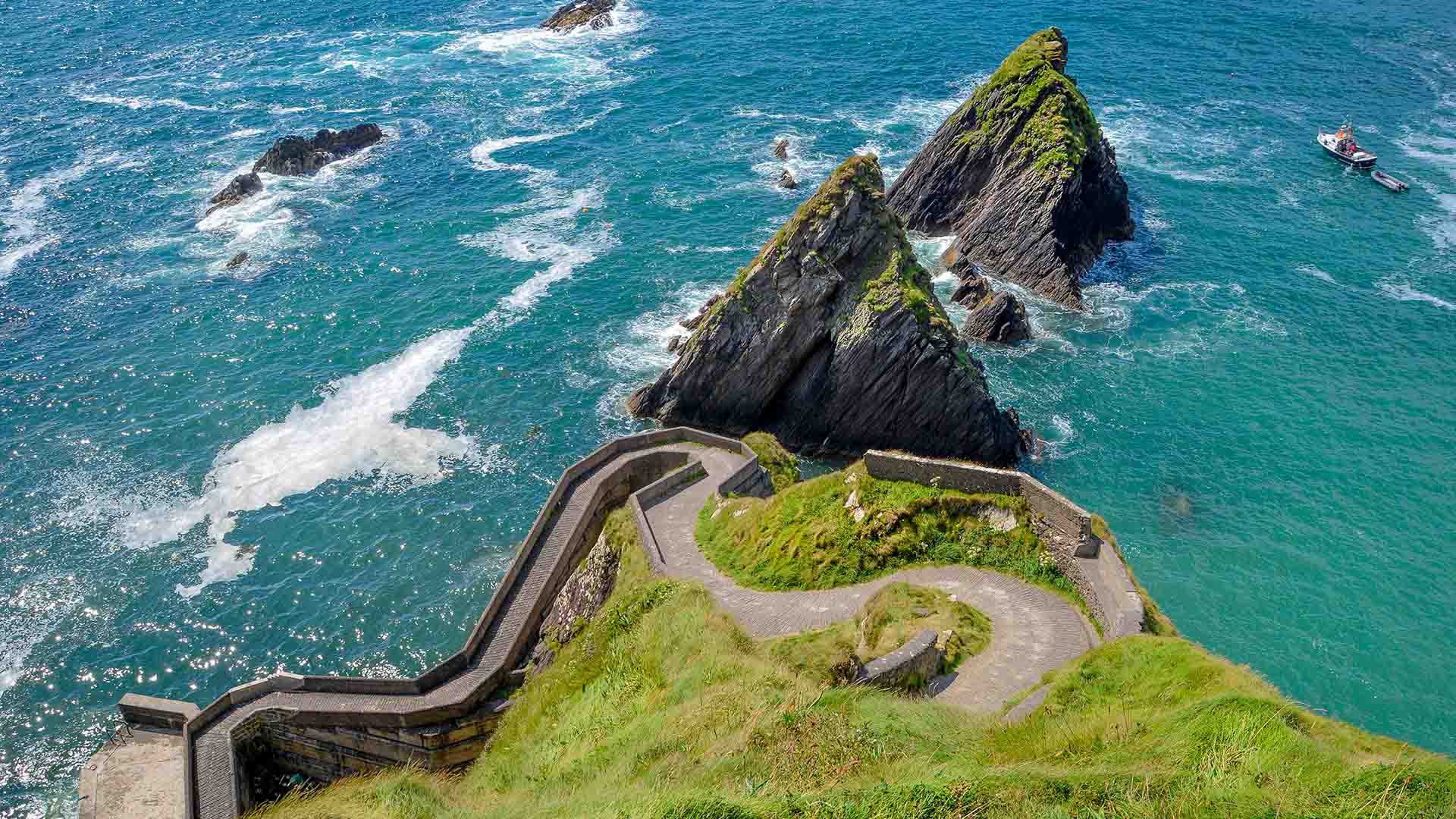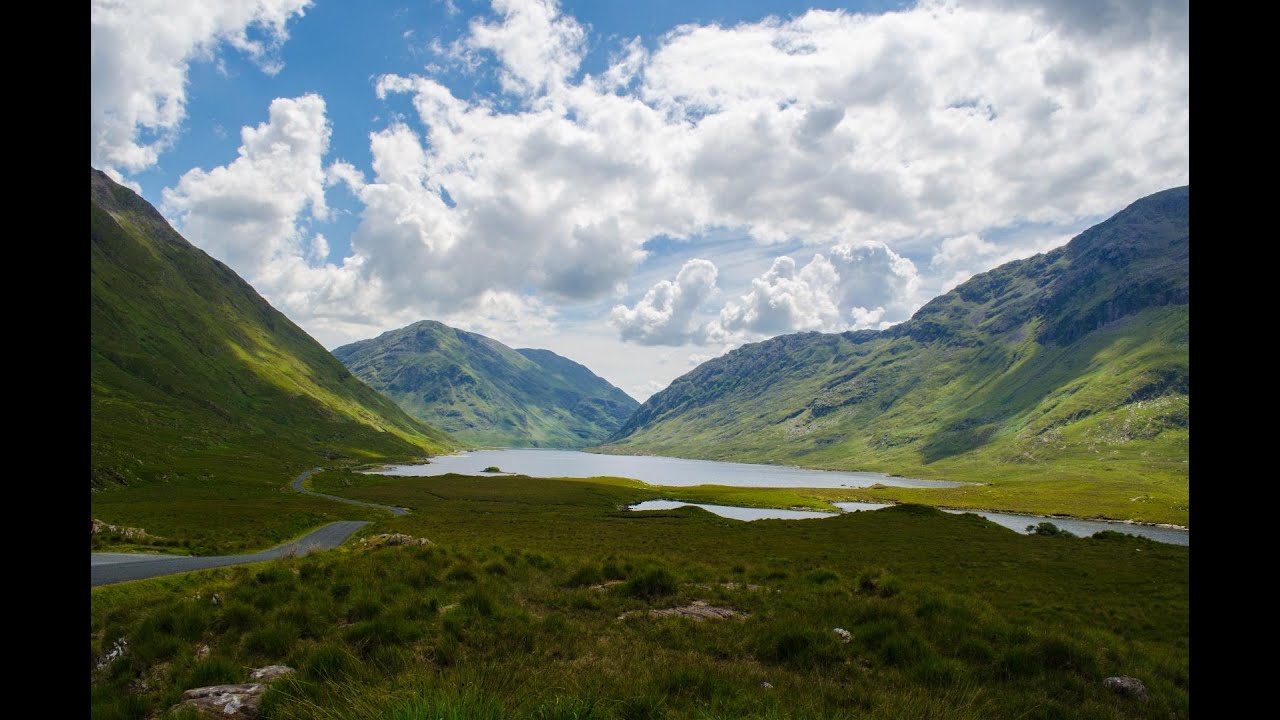Best Time Of Year To Visit Ireland - Planning The Perfect Trip
When planning a trip to Ireland, it's important to consider the best time of year to visit Ireland in order to make the most of your experience. The weather, cultural events, and tourist crowds can vary throughout the year, influencing the overall quality of your visit.
Author:Jane RestureJul 12, 2023231 Shares46.2K Views

When planning a trip to Ireland, it's important to consider the best time of year to visit Irelandin order to make the most of your experience. The weather, cultural events, and tourist crowds can vary throughout the year, influencing the overall quality of your visit.
Understanding the best time to visit Ireland will help you choose the ideal season that aligns with your preferences and interests.
Whether you're drawn to the vibrant festivals, picturesque landscapes, or historical sites, selecting the right time to visit Ireland can greatly enhance your travelexperience.
Best Time To Visit Ireland For The Weather
To take advantage of the finest weather of the year, you should visit Ireland during the spring and summer. You can take advantage of the warmest and driest months of the year between May and September.
In addition, there is more daylight during this time of year. This is ideal for taking in the scenery and appreciating the views until nightfall.
It is important to remember that, like many countries in Northern Europe, Ireland experiences constant rainfall. It is not for nothing that the country is so verdant! As the weather is quite variable, you may experience rain, sunlight, and wind on the same day. It contributes to the experience and allure of Ireland!
However, if you arrive prepared, you won't miss a thing. This is why we recommend carrying several layers at all times, particularly impermeable and impervious layers. Check out our packing list for Ireland for more information.
The climatic conditions you encounter also vary depending on where in Ireland you are. For example, the windier west coast is exposed to the Atlantic Ocean. Meanwhile, the southeast is typically sunnier and dryer.

Introducing Ireland
Summer In Ireland
Summer is one of the most pleasant seasons to visit Ireland. The average high temperature in the summer is about 18 degrees Celsius (64 degrees Fahrenheit), while the average low is around 13 degrees Celsius (55 degrees Fahrenheit).
You won't run out of things to do or see in Ireland right now; the country is thriving.
The summer is also a great time to get behind the wheel and drive throughout Ireland. In addition, there are more hours of daylight, making driving in Ireland a more pleasant experience.
Consider a privately led tour or small-group excursion with a local guide if you'd rather go with someone who knows the area well. You may relax and take in the sights of Ireland as your driver-guide points out the sights along the road.
The Aran Islands and Skellig Michael, both of which are quite isolated, are best visited in the summer. Boat tours are often only offered during the busy summer months and are always subject to the whims of the ocean and the weather.
Visit between April and September to get the most out of your vacation, particularly if you want to see a lot of sights. During the colder months, many attractions, including as museums, distilleries, and historic sites, have shorter operating hours. After the month of October, they shut down entirely.
When deciding when to visit Ireland, you should keep in mind that the country's 'peak season' coincides with its busiest time of year. The land comes alive with tourists from all over the globe during the months of June and August.
This is why April and October are ideal as shoulder months. There is still pleasant weather in April and May, and less tourists in September and October. If you want a less hectic vacation, those are the months to go.
These traditional Irish vacations run from April through October, the perfect time to see the country.
Autumn In Ireland
As with spring, fall is one of the greatest times to visit Ireland (after summer) due to the lack of crowds and the lovely, temperate weather. Festivals celebrating the harvest, cuisine, and other forms of entertainment abound at this time of year, and not only because of Halloween.
The leaves' transformation into a kaleidoscope of reds, oranges, and browns in autumn makes for beautiful hikes in natural regions such as national parks and woods.
Temperatures average approximately 54°F(12°C), but may drop as low as 41°F (5°C), so you'll want to dress warmly (with thermal gear). But remember that November is often the wettest month of the year, so bring along some rain gear in case it rains.
Winter In Ireland
Between the months of October and March, Ireland experiences its winter season. Fortunately, the island is in the path of the warm Gulf Stream, so the temperature doesn't drop too much even then. The average temperature ranges from 39 to 47 degrees Fahrenheit (4 to 8 Celsius).
The weather in Ireland during the winter is often windy and wet. In addition, you won't see much snow throughout your time in Ireland. However, the mountainous areas do have snow, often for around 30 days each year.
The benefits of traveling during the "off season" are often overlooked. Even while you won't have as much time to sightsee during the day due to fewer daylight hours, you'll be able to take in more expansive vistas without having to fight through crowds. It's even possible that you'll have whole sites to yourself!
The best part of visiting Ireland in the winter is that you won't have to cancel your sightseeing plans because of the weather. Do not be deterred by inclement weather. Winter in Ireland may provide a unique vantage point, as well as beautiful, gentle light.
Traveling to Ireland in the winter might be a great way to immerse yourself in the local culture. This time of year is perfect for drinking whiskey while listening to traditional music at a cozy tavern. Try some of the regional specialties and drink in the friendly Irish atmosphere.
Despite being a popular tourist destination all year round, a visit to Ireland in the winter will leave you with less options for things to do. Some must-see locations have seasonal or limited hours, so plan accordingly.
Spring In Ireland
With the arrival of spring comes mild showers and bright sunlight, making springtime in Ireland one of the most lovely times to visit. As wildflowers blossom and forested regions drink up the rain, the world becomes a kaleidoscope of colors, from emerald green to brilliant reds, blues, and yellows.
Seeing newborn lambs and cows playing in the fields is just one of the many adorable sights you'll see as you travel through the Irish countryside. Because summer is the high season, fewer people travel in the spring, therefore major tourist destinations like cities and national parks are mostly empty until June.
Still, if you want to spend most of your time outside, this is a great season to visit Ireland since the weather is quite similar to summer, with slightly colder temperatures and extended daylight hours.
Factors To Consider When Planning Your Visit
When planning a trip to Ireland, there are several factors to consider to ensure you have the best experience possible. Here are some key factors to keep in mind:
- Weather- Ireland's weather can be unpredictable, so it's important to pack accordingly. Regardless of the season, it's wise to bring layers, a waterproof jacket, and sturdy walking shoes. Check the weather forecast before your trip and be prepared for changes throughout the day.
- Peak Tourist Season- The peak tourist season in Ireland is during the summer months, particularly July and August. This means that popular attractions and accommodations may be crowded, and prices can be higher. If you prefer a quieter and more affordable experience, consider visiting during the shoulder seasons of spring and autumn.
- Festivals and Events- Ireland is known for its vibrant festivals and events throughout the year. Research and consider attending festivals related to your interests, such as music, literature, or cultural celebrations. These events can add an extra layer of enjoyment to your visit.
- Holidays and Public Transportation- Take into account the holidays and public transportation schedules when planning your visit. Some attractions or services may have reduced hours or be closed on public holidays. Plan accordingly and check the schedules in advance.
- Daylight Hours- The amount of daylight varies significantly throughout the year in Ireland. During the summer months, the days are long, with extended daylight hours, while winter days are shorter. Keep this in mind when planning outdoor activities or sightseeing tours.
- Accommodations and Reservations- Popular tourist destinations and accommodations can book up quickly, especially during peak season. It's advisable to make your reservations in advance to secure the accommodations that suit your preferences and budget.
- Budget- Consider your budget when planning your visit to Ireland. Prices for accommodations, transportation, and attractions can vary, especially during peak season. Research and compare prices to find the best deals and consider visiting during the shoulder seasons for more affordable options.
- Transportation- Determine the most convenient mode of transportation for your trip. Renting a car provides flexibility and the ability to explore remote areas, but be aware of driving on the left side of the road. Alternatively, public transportation such as trains and buses can be a cost-effective and efficient way to travel around Ireland.
- Local Customs and Etiquette- Familiarize yourself with Irish customs and etiquette to ensure a respectful and enjoyable visit. Learn a few basic phrases in Irish Gaelic, be polite, and follow local customs and traditions.
- Personal Interests and Activities- Consider your personal interests and the activities you would like to engage in during your visit to Ireland. Whether it's exploring historical sites, hiking in nature, indulging in culinary delights, or immersing yourself in traditional Irish music, plan your itinerary accordingly to make the most of your trip.
People Also Ask
When Is The Peak Tourist Season In Ireland?
Peak tourist season in Ireland typically occurs during the summer months, from June to August. This is when the weather is relatively warmer and many tourists visit the country.
When Is The Rainy Season In Ireland?
The rainy season in Ireland is spread throughout the year, with precipitation occurring frequently. However, the months of November to January tend to have a higher average rainfall.
Are There Any Major Festivals Or Events In Ireland During Specific Months?
Ireland hosts several major festivals and events during specific months. For example, the St. Patrick's Festival takes place in March, the Galway International Arts Festival happens in July, and the Dublin Fringe Festival occurs in September.
What Are The Advantages Of Visiting Ireland In The Off-peak Season?
Visiting Ireland during the off-peak season, which is typically from November to February, has its advantages. The tourist crowds are smaller, allowing for a more peaceful and less crowded experience. Additionally, accommodations and flights may be more affordable during this time.
What Are The Average Temperatures In Ireland During The Summer Months?
The average temperatures in Ireland during the summer months range from 15°C to 20°C (59°F to 68°F). However, it is always recommended to check the specific weather forecast for the time of your visit as temperatures can vary.
Final Thoughts
The best time of year to visit Ireland largely depends on your personal preferences and interests. Each season offers its own unique charms and experiences.
If you enjoy milder weather, vibrant festivals, and longer daylight hours, the summer months of June to August are an excellent choice.
For those seeking a quieter and more budget-friendly trip, the shoulder seasons of spring (April to May) and autumn (September to October) provide pleasant weather and fewer crowds.
Winter (December to February) offers a chance to experience Ireland's cozy atmosphere, traditional music sessions, and breathtaking landscapes.
Ultimately, the best time to visit Ireland is subjective and can be tailored to suit your specific interests, whether it's exploring historical sites, enjoying outdoor activities, or immersing yourself in the local culture.

Jane Resture
Author
Since she embarked on her first world trip in 2002, Jane Resture spent the past decades sharing her personal journey and travel tips with people around the world. She has traveled to over 80 countries and territories, where she experienced other cultures, wildlife she had only read about in books, new foods, new people, and new amazing experiences.
Jane believes that travel is for everyone and it helps us learn about ourselves and the world around us. Her goal is to help more people from more backgrounds experience the joy of exploration because she trusts that travel opens the door to the greatest, most unforgettable experiences life can offer and this builds a kinder, more inclusive, more open-minded world.
Latest Articles
Popular Articles